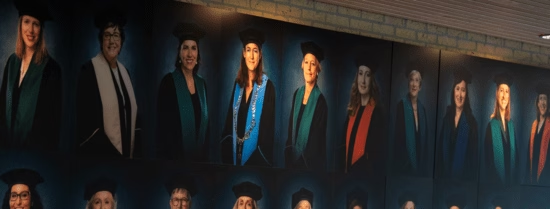What is EUR’s academic heritage?
The history of Erasmus University Rotterdam dates from 1913. The Netherlands School of Commerce (NHH) was founded in that year. More than one hundred years of academic practice and institutional history is recorded in many photographs, objects and documents. We consider all this material as our academic heritage. The heritage supports the memory of the institution and comprises building blocks with which the story of the university’s history and development can be told.
Erasmus University would like to share its historic material. This webpage takes you on a journey through our university’s history. You can find information here about our historic objects and documents. This includes the collection of portraits of leading professors and the sizeable collection of medals. The website will be expanded gradually with more information about the collections.
Everything achieved via scientific actions and saved for posterity is considered to be Erasmus University Rotterdam’s academic heritage. Our heritage comprises objects and documents arising from the practice of education and research at the university or that document and illustrate the history of the university and its predecessors. The heritage supports the memory of the institution and comprises building blocks with which the story of the university’s history and development can be told.
The majority of our academic heritage concerns objects and documents that document the history of the university and its predecessors. This includes many tens of thousands of photographs from all periods in history as well as portraits of professors, various printed material and the nib pen with which Queen Wilhelmina opened the Hogeschool’s first building in 1916.
Material originating directly from the practice of education and research is present to a lesser extent. Examples of this are the Monetary National Income Analogue Computer (MONIAC), special and other collections from the University Library (the scientific memory), as well as lecture notes by students and lecturers. Special collections include the archive and the library of Nobel Prize winner, Jan Tinbergen, and the economy-related commemorative medals from the Netherlands Economic Medal Cabinet (NEPK).
This historic material is in the care of the University Historic Gallery Foundation (SUHK) and the University Library. Objects and documents are also present in other institutions, including Rotterdam Museum and the City Archive (the university archive up to 1973, poster collection).
The history of Erasmus University Rotterdam dates from 1913. The Netherlands School of Commerce (NHH) was founded in that year; later continued as the Netherlands School of Economics (NEH). In 1973, the NEH merged with the Rotterdam Medical Faculty to form Erasmus University Rotterdam.
Appeal
If you have objects or documents that concern the history of Erasmus University, please contact Suzie Hermán (Curator Special Collections and Academic Heritage).








